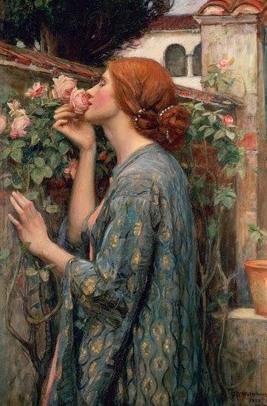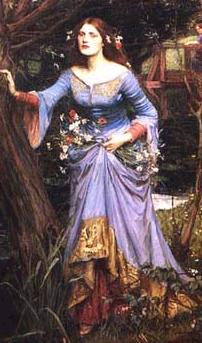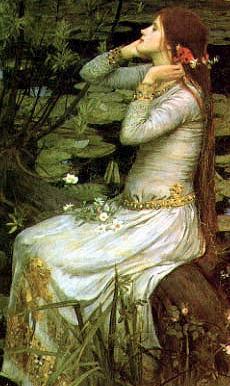
Candida Martinelli's Italophile Site

Main
Page This family-friendly site celebrates Italian culture for the enjoyment of children and
adults. Site-Overview
Open PDF of A Sicilian Romance Click on the PDF link to open the book in your Adobe
Reader (see the bottom of my main page if
you don't yet have the free Reader), then save it to your PC. Be
patient while it loads; it's worth it! It's 150 pages long. If you dislike reading on a screen, you can always
print it out on your printer.
Here is a clip of the first part of a recent filming of 'Northanger Abbey'.
Click through to YouTube to view the other parts of the film. It was very
entertaining!
Her books appealed mostly to damsels in her time-period, educated women,
young and old, wanting escapist, romantic reads. But plenty of
men read them too! Mrs. Radcliffe wrote several of these sorts of novels, all of which inspired
her contemporaries and became the standard for most all
romantic fiction thereafter.
Mrs. Radcliff introduced to a wide, popular audience in her novels
of the late 1700s:
Mrs. Radcliffe's books were so popular they attracted a parody or
spoof by none other than Jane Austen: Northanger
Abbey. Miss Austen created one of her usual romantic-comic
heroines, Catherine Moreland, and made her highly influenced by Mrs. Radcliffe's novels. Eager for a gothic-romantic adventure of her own, Catherine
sees intrigue everywhere, especially when she meets a young man whose
family happens to live in a renovated abbey. That's when her
imagination takes over and comic confusion ensues.
Northanger Abbey is a wonderful read after reading A
Sicilian Romance. You can better appreciate all of Miss
Austen's comic references--and Catherine Moreland's fantasies.
It's a short novel, more like a novella. It also happens
to be the first book she wrote, even if it wasn't her first
book published. Project
Gutenberg offers free
electronic copies of Northanger Abbey online, as well as all
the other Jane Austen novels.
Below is
the beginning of A Sicilian Romance. The book is a fun
read and should be read in a lighthearted manner. It resembles a
fairytale, complete with wicked stepmother. It was written in
the 1780s but set 50 years or so earlier in Sicily, which was then part
of the Two Kingdoms of Sicily, under the Spanish crown. I've
broken up the sometimes page-long paragraphs for ease of reading, and
corrected some spelling errors but I've removed none of the original
text.
You can read more about Ann Ward Radcliffe at Wikipedia.
Ophelia, the classic damsel in distress, but things
ended badly for poor Ophelia.
No knight in shining armor came to
her rescue. Her love was lost on dithering, depressive Hamlet.
This
book was edited and prepared from the public domain text from Project
Gutenberg by Candida Martinelli of Candida Martinelliís Italophile Site
During my travels abroad I visited this spot. As I
walked over the loose fragments of stone, which lay scattered through
the immense area of the fabric, and surveyed the sublimity and
grandeur of the ruins, I recurred, by a natural association of ideas,
to the times when these walls stood proudly in their original
splendour, when the halls were the scenes of hospitality and festive
magnificence, and when they resounded with the voices of those whom
death had long since swept from the earth. 'Thus,' said I, 'shall the present generation--he who
now sinks in misery--and he who now swims in pleasure, alike pass away
and be forgotten.' My heart swelled with the reflection; and, as I turned
from the scene with a sigh, I fixed my eyes upon a friar, whose
venerable figure, gently bending towards the earth, formed no
uninteresting object in the picture. He observed my emotion; and, as my eye met his, shook
his head and pointed to the ruin. 'These walls,' said he, 'were once
the seat of luxury and vice. They exhibited a singular instance of the
retribution of Heaven, and were from that period forsaken, and
abandoned to decay.' His words excited my curiosity, and I enquired further
concerning their meaning. 'A solemn history belongs to this castle, said he,
'which is too long and intricate for me to relate. It is, however,
contained in a manuscript in our library, of which I could, perhaps,
procure you a sight. A brother of our order, a descendant of the noble
house of Mazzini, collected and recorded the most striking incidents
relating to his family, and the history thus formed, he left as a
legacy to our convent. If you please, we will walk thither.' I accompanied him to the convent, and the friar
introduced me to his superior, a man of an intelligent mind and
benevolent heart, with whom I passed some hours in interesting
conversation. I believe my sentiments pleased him; for, by his
indulgence, I was permitted to take abstracts of the history before
me, which, with some further particulars obtained in conversation with
the abate, I have arranged in the following pages.
To his first wife, he married Louisa Bernini, second
daughter of the Count della Salario, a Lady yet more distinguished for
the sweetness of her manners and the gentleness of her disposition,
than for her beauty. She brought the Marquis one son and two
daughters, who lost their amiable mother in early childhood. The
arrogant and impetuous character of the Marquis operated powerfully
upon the mild and susceptible nature of his Lady: and it was by many
persons believed, that his unkindness and neglect put a period to her
life. However this might be, he soon afterwards married Maria
de Vellorno, a young Lady eminently beautiful, but of a character very
opposite to that of her predecessor. She was a woman of infinite art,
devoted to pleasure, and of an unconquerable spirit. The Marquis, whose heart was dead to paternal
tenderness, and whose present Lady was too volatile to attend to
domestic concerns, committed the education of his daughters to the
care of a Lady, completely qualified for the undertaking, and who was
distantly related to the late Marchioness. He
quitted Mazzini soon after his second marriage, for the gaieties and
splendour of Naples, whither his son accompanied him. Though naturally
of a haughty and overbearing disposition, he was governed by his wife.
His passions were vehement, and she had the address to bend them to
her own purpose; and so well to conceal her influence, that he thought
himself most independent when he was most enslaved. He paid an annual
visit to the castle of Mazzini; but the Marchioness seldom attended
him, and he staid only to give such general directions concerning the
education of his daughters, as his pride, rather than his affection,
seemed to dictate.
If you wish printed books, they are available from Amazon.com
Visit my other pages:
Zabaione: A Saint's Recipe Men Love And my other Sicily pages:
Palaces of Sicily and Taormina

A
Sicilian Romance by Mrs. Radcliffe, the Mother of Gothic Romance
Novels
![]()







![]()
Belle Dame Sans Merci

![]()
Crystal Ball


Mrs. Ann Ward Radcliffe
(b.1764-d.1823)is the English novelist considered the mother of
Gothic Romance Novels, starring damsels in distress.










![]()
A
SICILIAN ROMANCE
By Ann Ward Radcliffe
First Published 1790

![]()
Preface
 n
the northern shore of Sicily are still to be seen the magnificent
remains of a castle, which formerly belonged to the noble house of
Mazzini. It stands in the centre of a small bay, and upon a gentle
acclivity, which, on one side, slopes towards the sea, and on the
other rises into an eminence crowned by dark woods. The situation is
admirably beautiful and picturesque, and the ruins have an air of
ancient grandeur, which, contrasted with the present solitude of the
scene, impresses the traveller with awe and curiosity.
n
the northern shore of Sicily are still to be seen the magnificent
remains of a castle, which formerly belonged to the noble house of
Mazzini. It stands in the centre of a small bay, and upon a gentle
acclivity, which, on one side, slopes towards the sea, and on the
other rises into an eminence crowned by dark woods. The situation is
admirably beautiful and picturesque, and the ruins have an air of
ancient grandeur, which, contrasted with the present solitude of the
scene, impresses the traveller with awe and curiosity. End of
Preface
Volume One
CHAPTER I
![]() owards
the close of the sixteenth century, this castle was in the possession
of Ferdinand, fifth Marquis of Mazzini, and was for some years the
principal residence of his family. He was a man of a voluptuous and
imperious character.
owards
the close of the sixteenth century, this castle was in the possession
of Ferdinand, fifth Marquis of Mazzini, and was for some years the
principal residence of his family. He was a man of a voluptuous and
imperious character. 